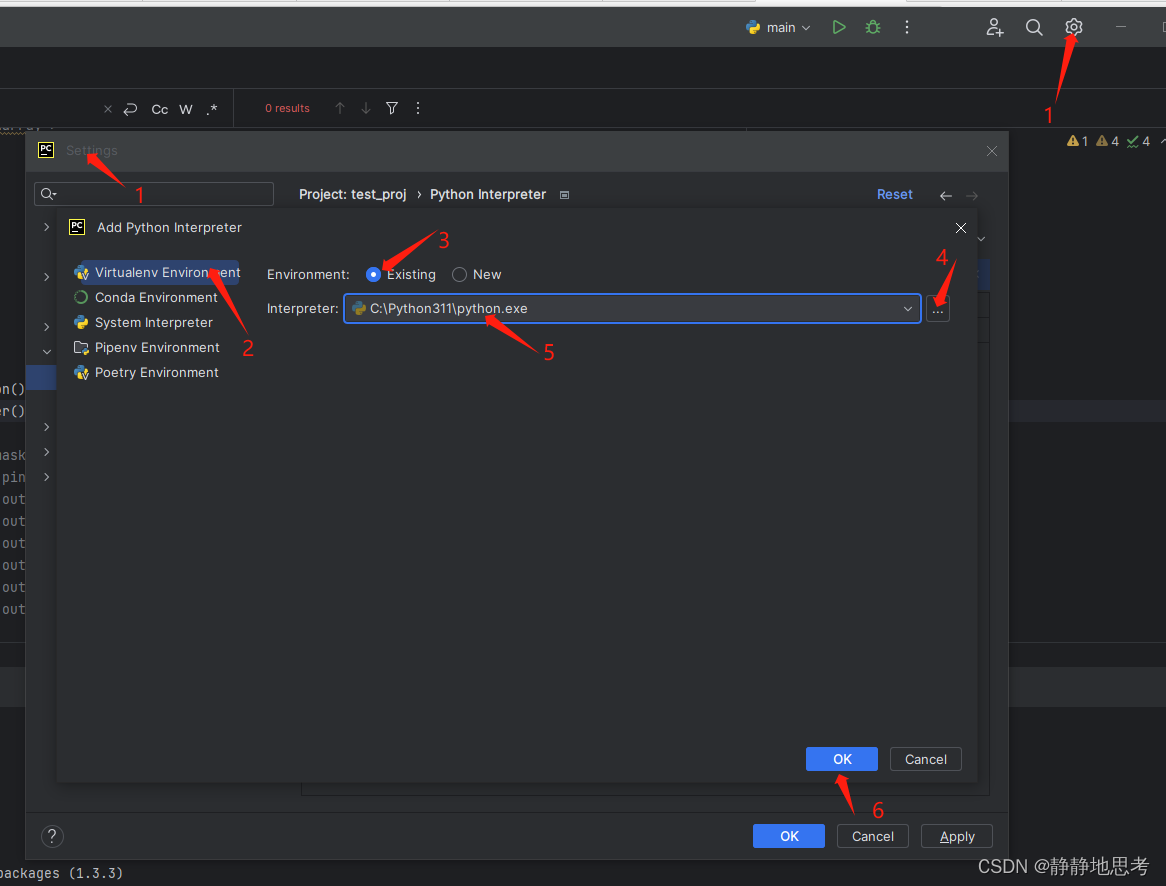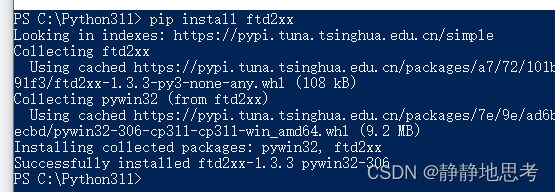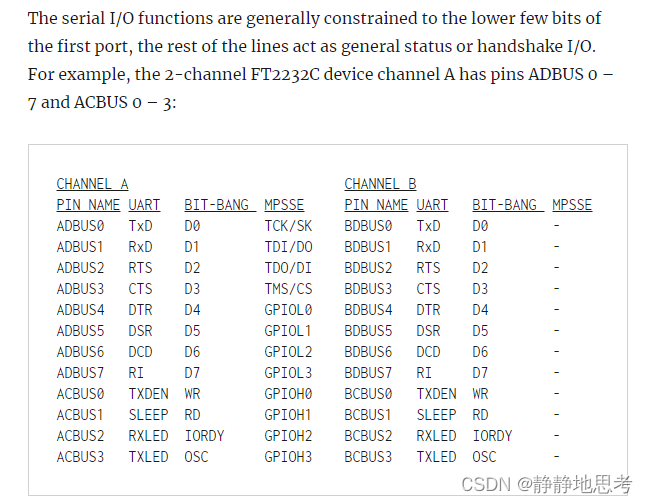- 1Unity 3D动态修改Shader状态,使物体透明等等_untiy 代码设置shader,并解决在手机上透明效果不对的问题
- 2鸿蒙系统起飞!Flutter 完全适配指南_flutter 鸿蒙
- 3[小米电视][原创]小米电视播放mkv没声音解决办法
- 4【初始RabbitMQ】死信队列的实现
- 5Python -- 利用pygame库进行游戏开发基础_python pygame库
- 6C语言实现中文BGK、UNICODE、UTF8之间的编码转换_c语言汉字编码转换
- 7【OpenCV进阶】opencv4.1_contrib扩展模块安装与使用_opencv_contrib
- 8unity3dSocket通信中使用Protobuf_unity socket protobuf处理数据
- 9机器学习周刊03:如何学习深度学习?2024 年学习生成式 AI 路线图、如何构建高效的RAG系统、苹果 腾讯最新论文、阿里DreaMoving_rag学习路径
- 10AI Mass人工智能大模型即服务时代:AI Mass在图像识别中的应用案例_ai大模型智能图像识别技术
python 操作FT232H——(1)准备工作与IO输出方波信号_ft232h编程
赞
踩
1.准备工作:
python环境:
安装python 环境,我目前使用的是pycharm2023.2.1 community Edition 版本
需要注意设置python解释器的版本及关联本地库,这样就不需要在新的工程中安装库文件了,(当然也有缺点,在另外新的开发环境下,需要重安装一次)
在设置中找到python 解释器,虚拟环境使用本地。

FTDI库:
我选择的是FTD2xx,安装命名为 :pip install ftds2xx;

Device driver
As standard, when an FTDI device is plugged into a Windows PC, the operating system loads the default Virtual Com Port driver, that can only handle asynchronous serial (RS232-type) protocols. However, we want to be a bit more adventurous, so need to substitute the ‘d2xx’ driver, available from the FTDI drivers page. A quick way to check which driver is active is to look at the Device Manager; if the FTDI part appears as a COM port, it is asynchronous-only.
Use ‘pip’ to install a Python library that will access the d2xx driver; there are several available (such as pyftdi, pylibftdi) but the only one that worked seamlessly with Python 2.7 and 3.x on my systems was the simplest: ftd2xx, which is just a CTYPES wrapper round the d2xx API
2.代码及操作--连接FTDI设备,并读设备信息
- import sys, ftd2xx as ftd
- d = ftd.open(0) # Open first FTDI device
- print(d.getDeviceInfo())
- print(hex(d.getDriverVersion()))
- print(hex(d.getComPortNumber()))
执行结果为:
{'type': 8, 'id': 67330068, 'description': b'Single RS232-HS', 'serial': b''}
注意要连接上设备,否则会报错误:
Traceback (most recent call last):
File "F:\python_t\test_proj\main.py", line 37, in <module>
d = ftd.open(0)
^^^^^^^^^^^
File "F:\python_t\test_proj\venv\Lib\site-packages\ftd2xx\ftd2xx.py", line 268, in open
call_ft(_ft.FT_Open, dev, c.byref(h))
File "F:\python_t\test_proj\venv\Lib\site-packages\ftd2xx\ftd2xx.py", line 178, in call_ft
raise DeviceError(status)
ftd2xx.ftd2xx.DeviceError: DEVICE_NOT_FOUND
另外的设备打开方式:
- def testopenEx(self):
- dev0 = None
- try:
- devices = ftd2xx.listDevices()
- if devices is None:
- raise DeviceError("Device not found")
- dev0_id = devices[0]
- dev0 = ftd2xx.openEx(dev0_id)
- self.assertIsInstance(dev0, ftd2xx.FTD2XX)
- self.assertEqual(dev0.getDeviceInfo()["serial"], dev0_id)
- except AssertionError:
- raise
- finally:
- if dev0:
- dev0.close()
3.代码操作-DO 输出3个方波信号:
(Bitbang mode: toggling an I/O pin)
- import sys, ftd2xx as ftd
-
- print("hello")
- d = ftd.open(0)
- print(d.getDeviceInfo())
- print(hex(d.getDriverVersion()))
- print(hex(d.getComPortNumber()))
-
- OP = 0x01 # Bit mask for output D0
- d.setBitMode(OP, 1) # Set pin as output, and async bitbang mode
- d.write(str(OP)) # Set output high
- d.write(str(0)) # Set output low
- d.write(str(OP)) # Set output high
- d.write(str(0)) # Set output low
- d.write(str(OP)) # Set output high
- d.write(str(0)) # Set output low





